Huerta Exam 1: Functional ROM Edema Assessment and Management
1/71
There's no tags or description
Looks like no tags are added yet.
Name | Mastery | Learn | Test | Matching | Spaced |
|---|
No study sessions yet.
72 Terms
components of functional motion:
1) ROM
2) Strength
3) Endurance
*you need all three to understand a client's performance
What provides the best information for determining intervention strategies that would be most helpful, such as adaptive equipment and tx?
Evaluating this client as he engaged in occupations in specific contexts
Getting information underlying those client factors (muscle strength, range of motion [ROM]) contributing to his decrease in function was critical.
occupation-based functional motion assessment is:
a way of assessing the ROM, strength, and motor control available for task performance by observing the client during performance of everyday occupations in varied contexts and environments.
what can be observed though a functional motion assessment?
- performance difficulties
- movement patterns
- limited ROM
- limited stregth
- compensatory motion
Because the primary responsibility of the occupational therapist is to assess occupational performance, identify performance problems, and plan intervention strategies that will improve the client's ability to fully engage in occupations, sensorimotor limitations first should be assessed through:
observation of functional activities.
It is possible to administer a gross assessment of joint mobility and muscle strength by having the client perform those motions associated with ... (give an example)
functional tasks (ie, a functional motion assessment)
The OT practitioner could observe as the client reaches overhead, as would happen when putting dishes away in an overhead cupboard, or taking a step to the side, as when stepping into a bathtub
muscle strength, ROM, and motor control are:
a) client factors
b) performance skills
c)
client factors
An occupation-based functional motion assessment has an advantage over the functional motion assessment because
although the client will perform motions as described previously, there is the added resistance to body structures that will occur as the result of using equipment such as a sliding door, manipulating objects such as cards, or resisting fatigue and having endurance during repetitive activities such as folding clothes or bouncing a ball
Also, because the client is performing these tasks in environments and contexts that are meaningful, the client's full participation and engagement in the task may be heightened.
when observing a client perform selected tasks, the occupational therapist is doing an:
a) individual activity analysis
b) objective activity analysis
individual
activity analysis that can be applied universally:
a) individual activity analysis
b) objective activity analysis
objective
Objective activity analysis
activity analysis of how the typical person performs
individual activity analysis
activity analysis of how YOUR CLIENT performs the activity
The purpose of observation is to
understand the client's occupational performance problems in the context of the interaction between the person, the task, and the environment.
what assessments will give the therapist specific information about the function of the musculoskeletal, neurophysiological, and sensorimotor systems?
Joint ROM, manual muscle testing, and motor control assessments
evaluation of the lower extremity + sample observations: hip
1) hip flexion and extension --> shave legs
2) hip abd and add --> mount a bike
3) internal and external rotation --> shave in tub lateral leg
evaluation of the lower extremity + sample observations: knee and foot
1) knee flexion and extension --> kick a ball
2) plantar flexion --> tippy toes
3) dorsiflexion --> gas pedal lift
4) inversion and eversion
plantar flexion and dorsi flexion
tippy toes
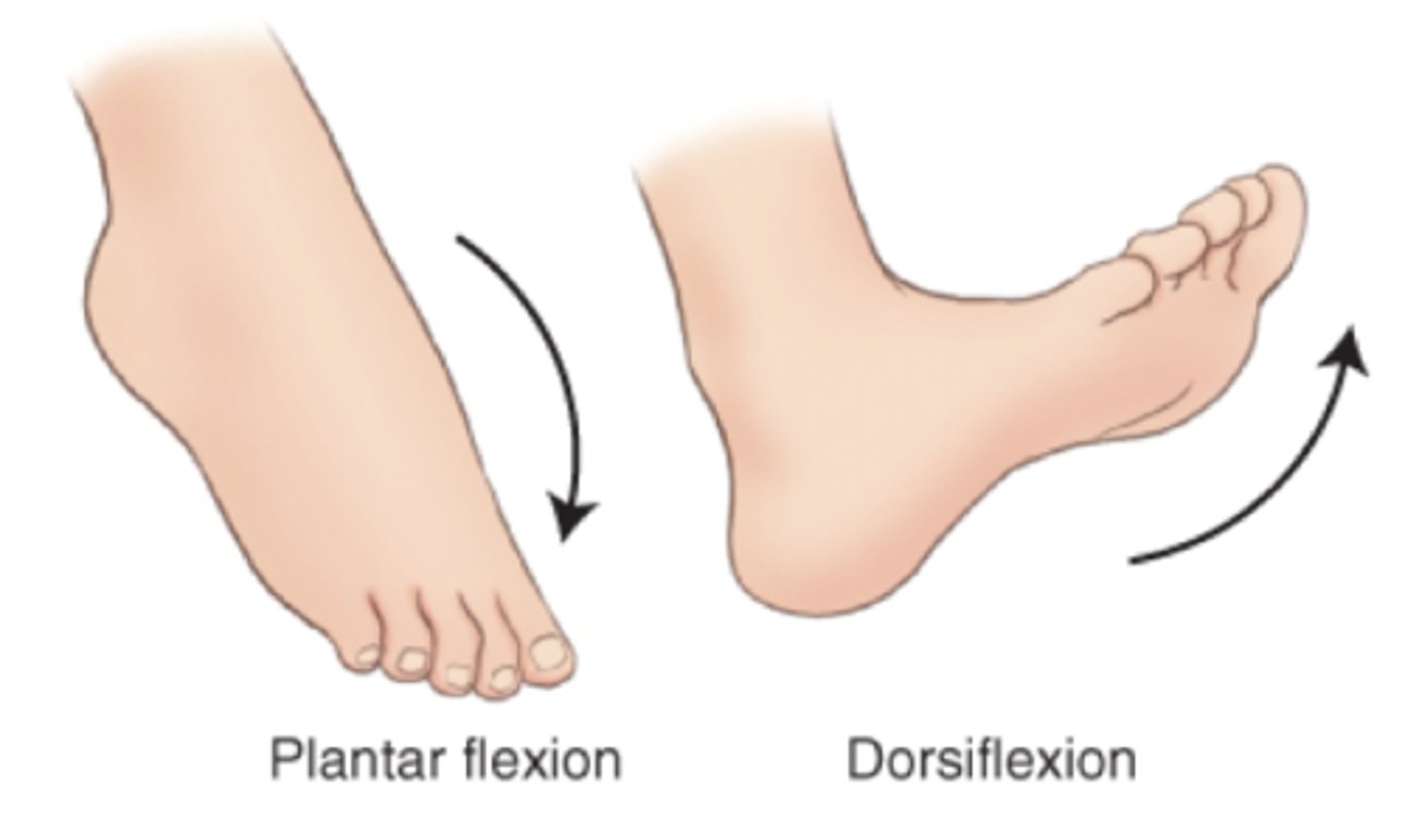
evaluation of the upper extremity + sample observations: shoulder
1) shoulder flexion --> cupboard
2) shoulder extension --> grab item from back pocket
3) horizontal add and abd--> hold hair dryier
4) internal and external rot --> clasp bra
evaluation of the upper extremity + sample observations: elbow and wrist
1) elbow flexion and extension
2) wrist flexion and extension
3) forearm pronation and supination
4) fingers
helps us interact with the world:
a) pronation
b) supination
pronation
help complete self care activities:
a) pronation
b) supination
supination
By simply observing a client engaging in functional activities, the therapist cannot make general assumptions as easily about muscle strength in the upper extremities as in the lower extremities. Why?
(1) the variety of ways in which the upper extremity can be positioned to complete any given task (ie, there is not one right way to do the task),
(2) the complexity of motor patterns possible requiring gross motor and fine motor skill
(3) the dependency of the distal joints and musculature on the more proximal joints for positioning.
*If several people are observed donning shirts, it will be apparent that different techniques are used by each.
muscle testing grades
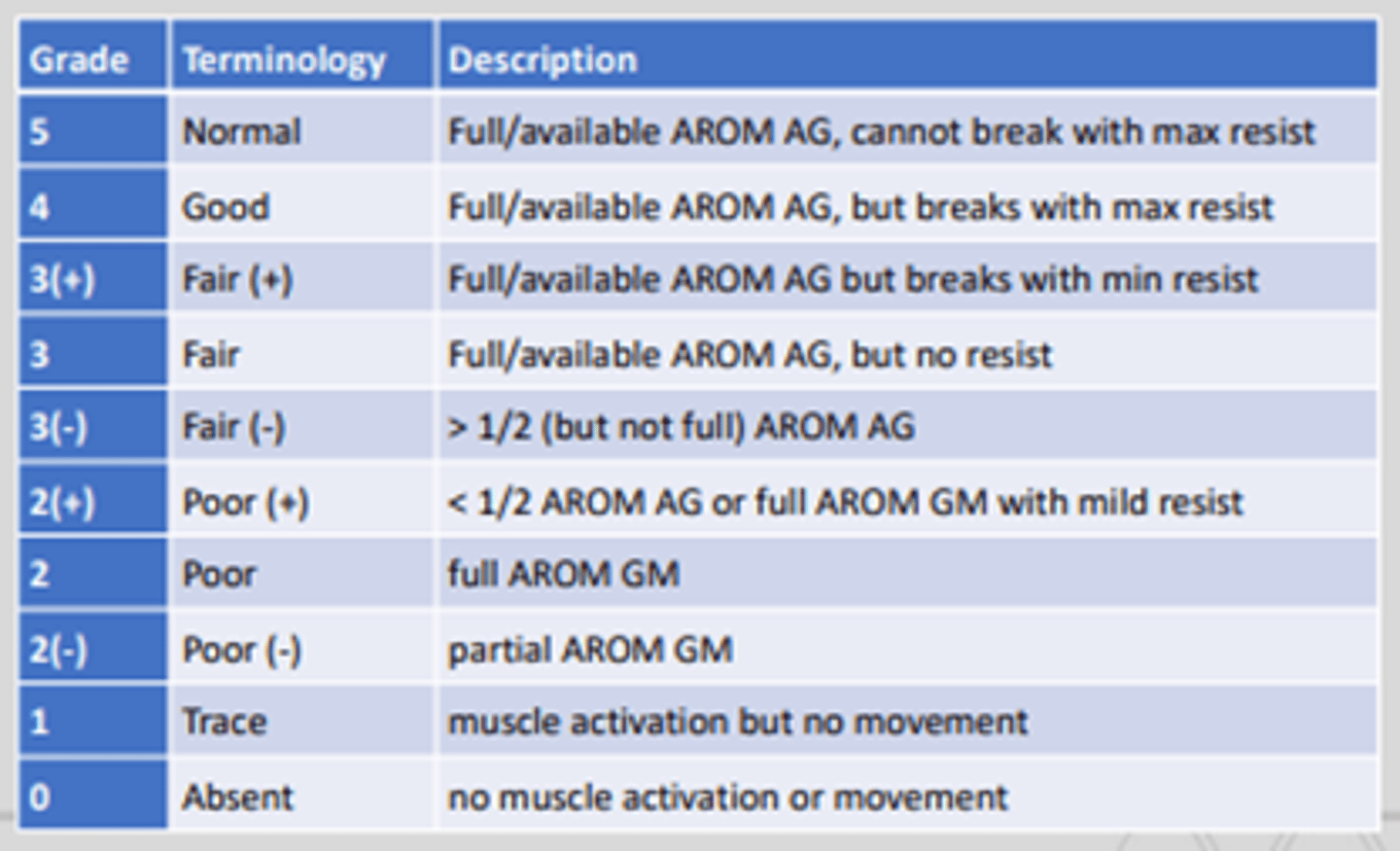
AROM vs PROM vs AAROM
AROM - client's muscles acting on the joint
PROM - outs forces acting on the joint
AAROM - muscle control movement part way in addition to another force that helps go through with it
In normal individuals, ... is slightly greater than ... because of the slight elasticity of soft tissue (PROM/AROM)
In normal individuals, PROM is slightly greater than AROM because of the slight elasticity of soft tissue
To screen for AROM, the therapist asks the client to .
perform all the active movements that occur at the joint
- via functional performance or directed screening
- look for differences and deficits
if differences/deficits noted concerning AROM, what must the OT do?
determine the cause:
- muscle weakness?
- joint involvement?
- pain?
To screen for PROM, the therapist
moves the joint passively through all of its motions to estimate ROM, detect limitations, and observe the quality of movement, end-feel, and the presence of pain.
Purpose of ROM screening and assessment:
● determine limitations interfering with function
● determine additional range needed
● keep record of progression / regression
● measure objectively
● determine appropriate TX goals
● select TX modalities, positioning tech.
● determine need for splints & assistive devices
WNL
within normal limits
WFL
within functional limits
- amount of motion needed to perform ADL without adaptive equipment
ROM Contraindications
1) joint dislocation
2) unhealed fractures
3) immediately after surgery
4) myositis ossificans (muscle calssifies)
ROM Precautions
○Inflammation or infection
○ Pain medications or muscle relaxants
○ Osteoporosis
○ Hypermobility or subluxation
○ Newly united fracture
○ Prolonged immobilization
○ Ankylosis is suspected
○ Bone Carcinoma
○ Fragile bone condition
○ Acute injury to soft tissue
○ Hematoma
normal elbow rom
0-140
interpret this result: elbow ROM 15-140
extension limitation
interpret this result: elbow ROM 0-110
flexion limitation
interpret this result: elbow ROM -20-0-140
abnormal hyperextension
besides taking measurements of ROM, what should we note?
-position (supine, sit, stand)
- disconfort (pain)
OT goal regarding ROM
movement though full ROM in the use of occupation s
issues that might impact ROM
1) pain
2) edema
3) skin and soft tissue contractures
4) spasticity
5) bone obstruction
if PROM > AROM
suspect muscular weakness or tissue lesion
if PROM = AROM (and are deficient)
suspect capsular adhesions or joint tightness
- joint issue
a client presents with skin and soft tissue contractures, what should we do?
joint mobilization
a client has bone obstruction, what should tx focus on?
since this is a structural problem, we should focus on compensation as the client will not get their range back
ways to perform joint mobilization
- active stretch
- passive stretch
- compensatory techniques
when should we use compensatory techniques for joint mobilization?
when there are permanent ROM deficits
.... refers to the amount of joint range necessary to perform essential ADLs and instrumental activities of daily living (IADLs) without the use of special equipment.
Functional ROM
to increase PROM we might...
introduce STRETCHING
- the point of maximal stretch, few degrees beyond the point of discomfort and hold there for a few seconds (20)
active/passive stretching is more effective. why?
passive - get a greater stretch
* in active the patient consuls the force, speed, extent and direction -- more limited stretch
client uses the force of the agonist to increase the length of the antagonist
a) active stretch
b) passive stretch
active stretch
active stretch requires what kind of strength?
good (4/5) to normal (5/5) strength
- in agonist so antagonist gets stretched
If the OT practitioner determines that the client has limited joint ROM during the initial evaluation, the practitioner may opt to perform ...
passive stretch or active stretching to restore the joint movement.
who performs passive stretch?
Passive stretch is performed by the practitioner when he or she moves the client's body segment through the available joint ROM and holds the segment at the end of the ROM while applying gentle but firm force or stretch.
Passive stretch may also be performed by the client uses his or her unaffected extremity to move the affected extremity through the available range of motion and holds the stretch at the end of the ROM.
Last, passive stretch may be performed through the use of an outside mechanical device, which may include CPM machines, pulleys, or static or dynamic orthotic devices.
PROM is not needed when...
It is important to note that passive stretch is meant to increase ROM and is not needed when full range of motion is available within the joint
For example, forceful contraction of the triceps could be used to stretch the bicep muscles.
example of active stretch - sawing
Sawing-requires forceful contraction of triceps with a concomitant stretch of the biceps
how to passively stretch a client:
○ Place client in comfortable position
○ Stabilize parts around area to be stretched
○ Prevent compensatory movements
○ Make sure muscle is relaxed before stretching (hot pack, ultra sound)
○ Apply gentle, firm, prolonged stretch, holding for several seconds up to 45 seconds
○ Patient should not feel pain once stretch has been released
passive or active: stretch of wrist flexors during a block printing activity
passive
stretching precautions
1) sensory loss (pain alarm turned off)
2) steroids (can make structures brittle)
3) prolonged immobilization
contraindications for stretching
inflammation!! --> no stretch because it exacerbates inflammation
when our goal is to increase ROM, activities should focus on what?
desired movements; should be repetitive; and gradable
○ provide gentle, active stretch
○ slow, repetitive isotonic contraction
○ increase ROM beyond limitation
○ ROM routine as part of HEP (home ex program)
○ Adapt activities
to increase ROM, we should focus on isotonic or isometric contractions?
slow, repetitive isotonic contractions
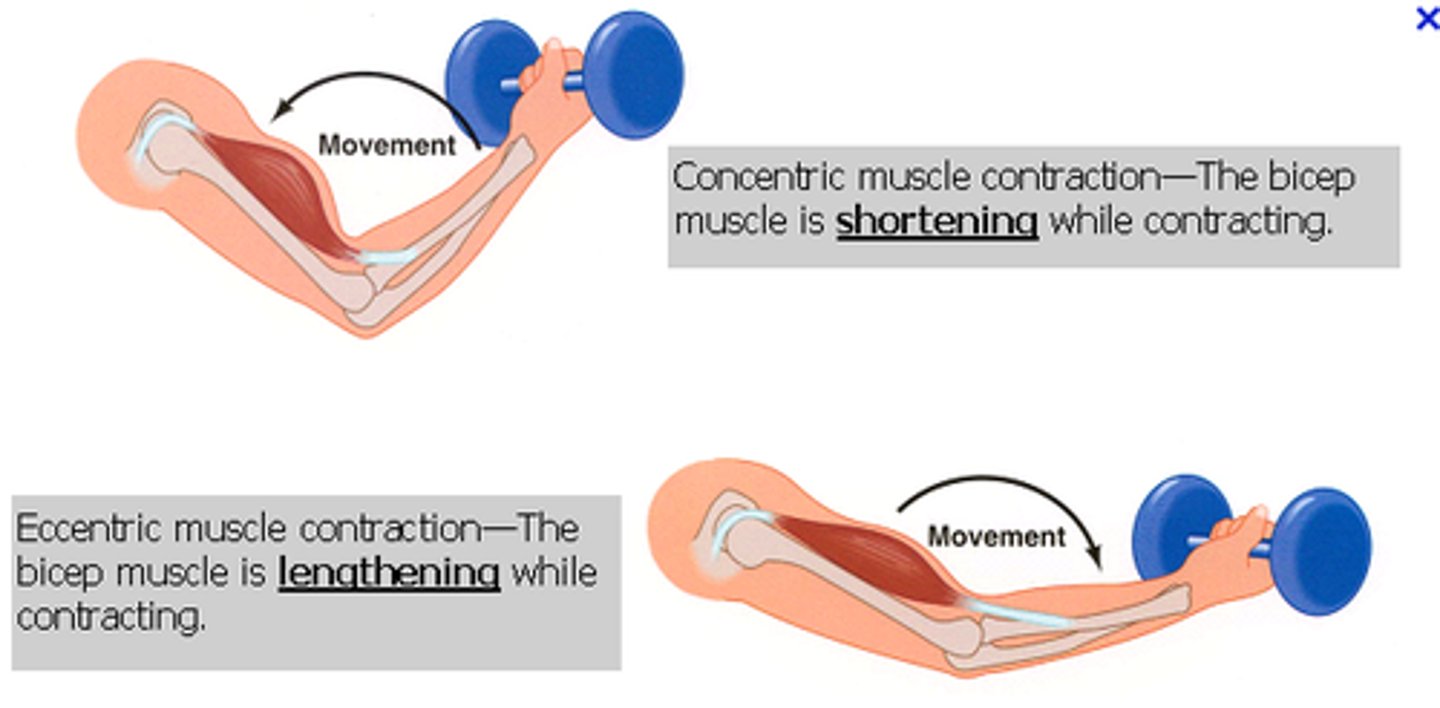
isometric contraction
Muscle contracts but there is no movement, muscle stays the same length
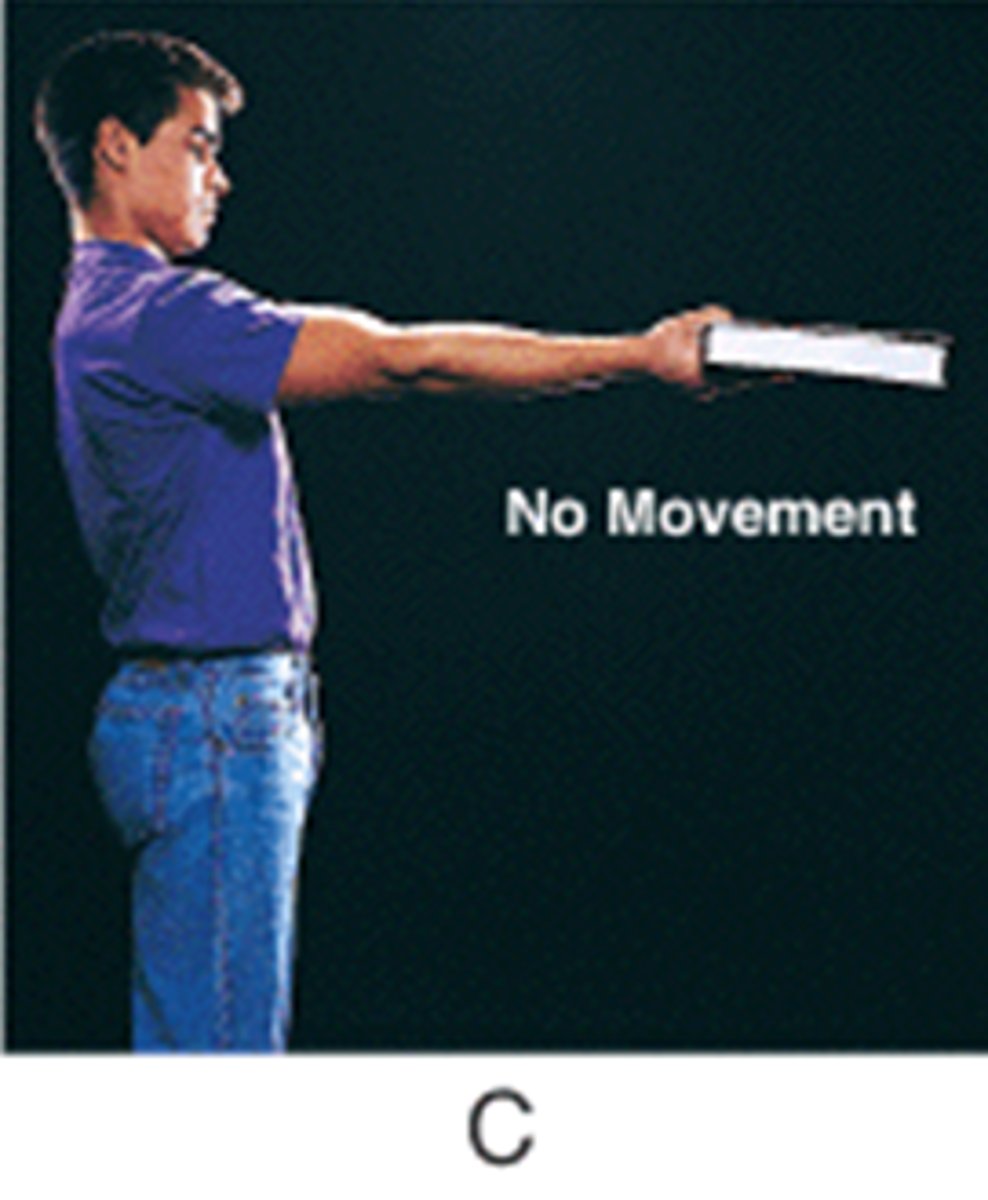
isotonic contractions
muscle shortens and movement occurs
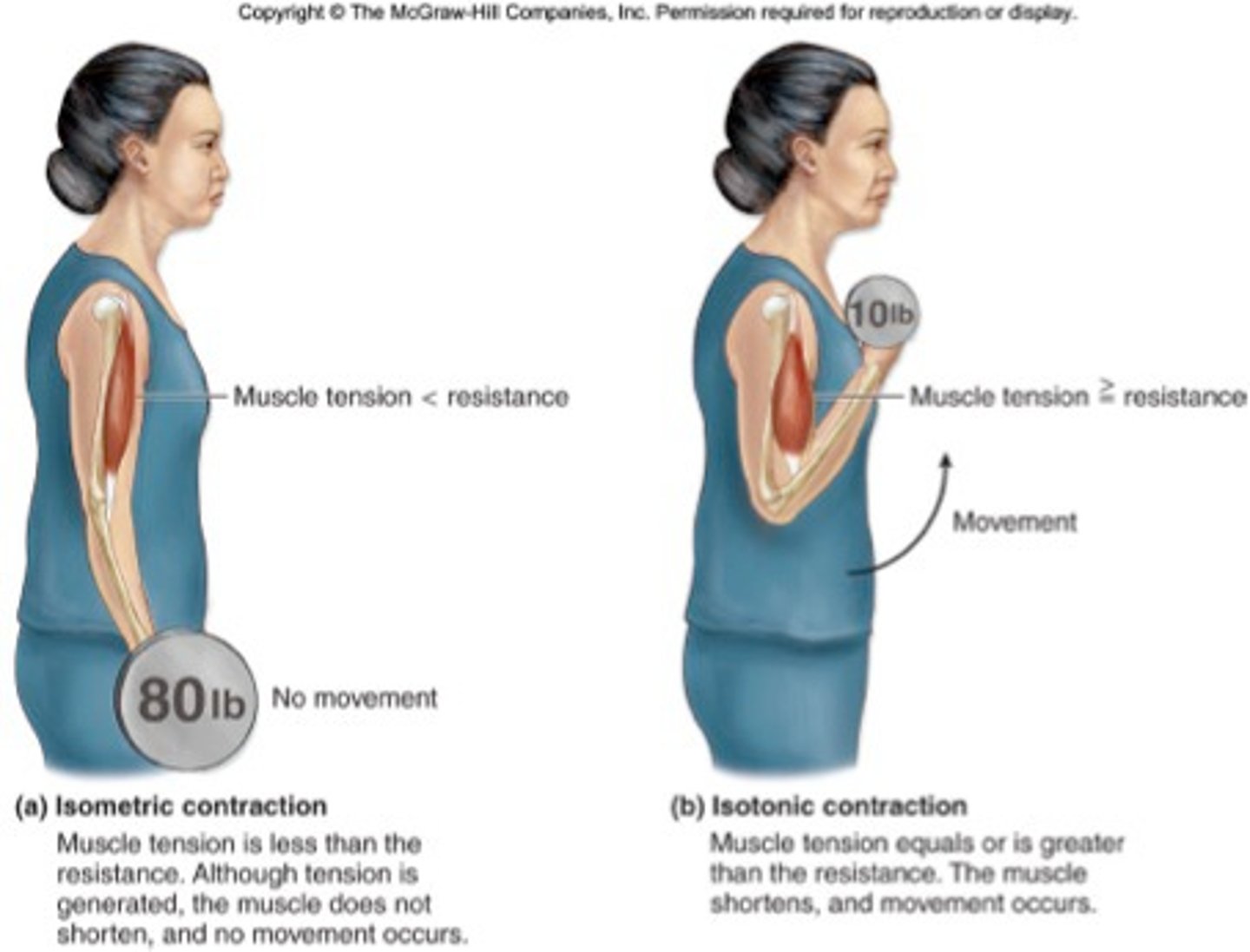
examples of activities to increase ROM
- shoulder arc
- finger ladder (AAROM)
- ring tree
- dowel
- lengthen handles to facilitate active stretching (less flexion in client)
- preparing a meal (reaching - shoulder flexion)
compensatory techniques for limited ROM
1) long handle shoe horn (no hip flexion, less UE motion)
2) toilet paper handle (range limitation)
what is edema?
a condition characterized by an excess of watery fluid collecting in the cavities or tissues of the body.
- abnormal swelling
- accumulation of interstitial fluid
- pitting edema
- skin becomes hard, shinny, swollen
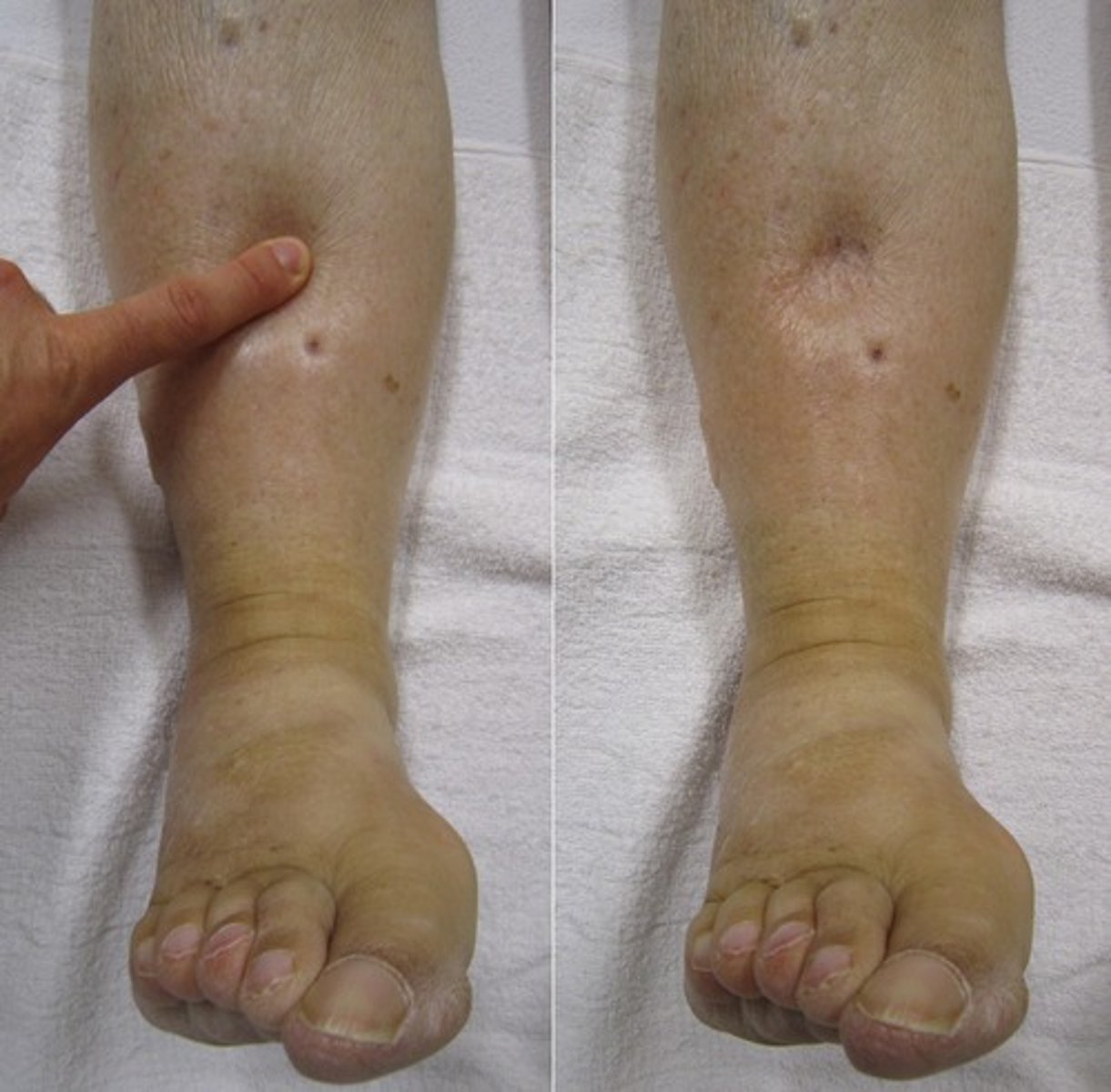
edema is:
a) localized
b) generalized
can be both
signs of edema
● accumulation of interstitial fluid
● abnormal swelling
● causes distention of skin
● localized or generalized
● skin becomes hard, shiny, swollen
● increase in circumference
● pain & weight gain (tissue, not overall body; receptors fire constantly)
● obstruction to the lymphatic system
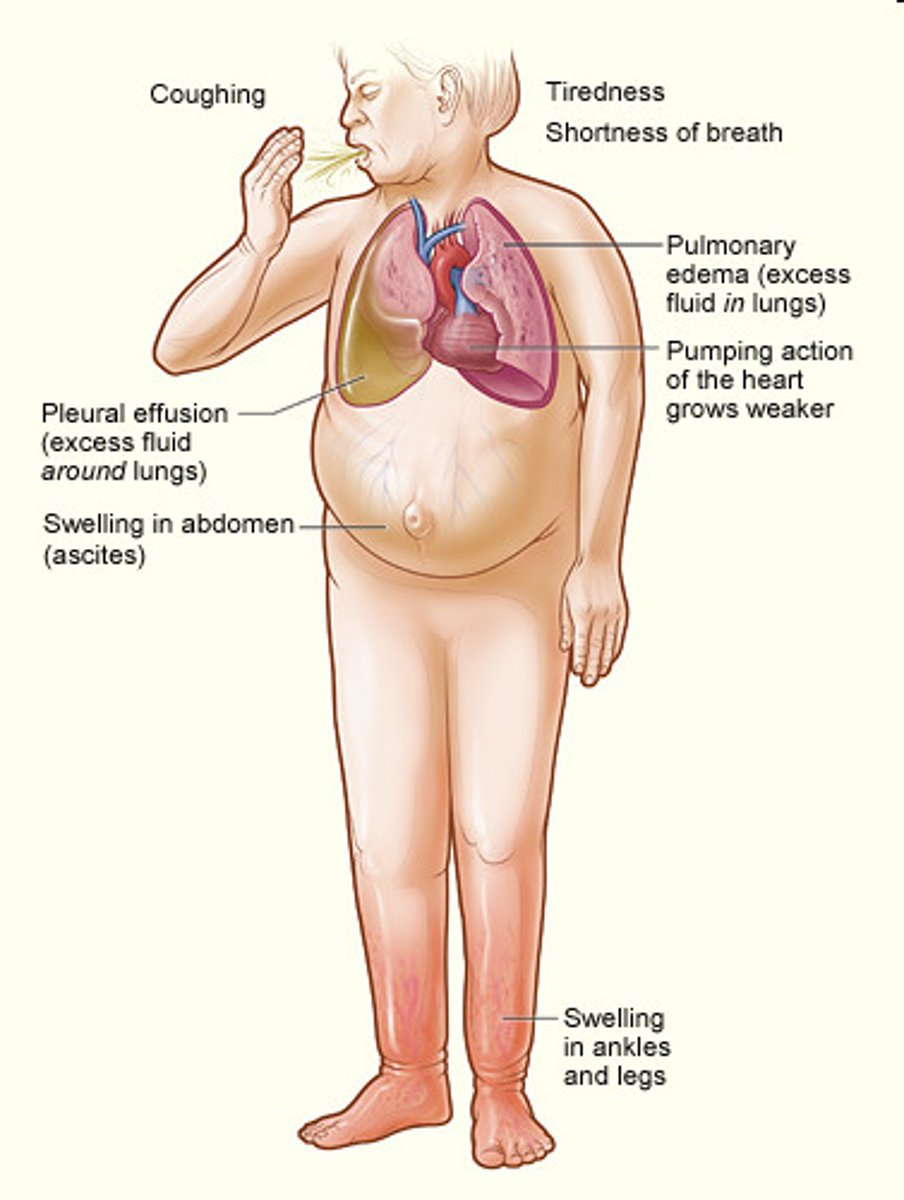
how do we evaluate edema?
volumetrics
circumferential
*compare to unaffected side
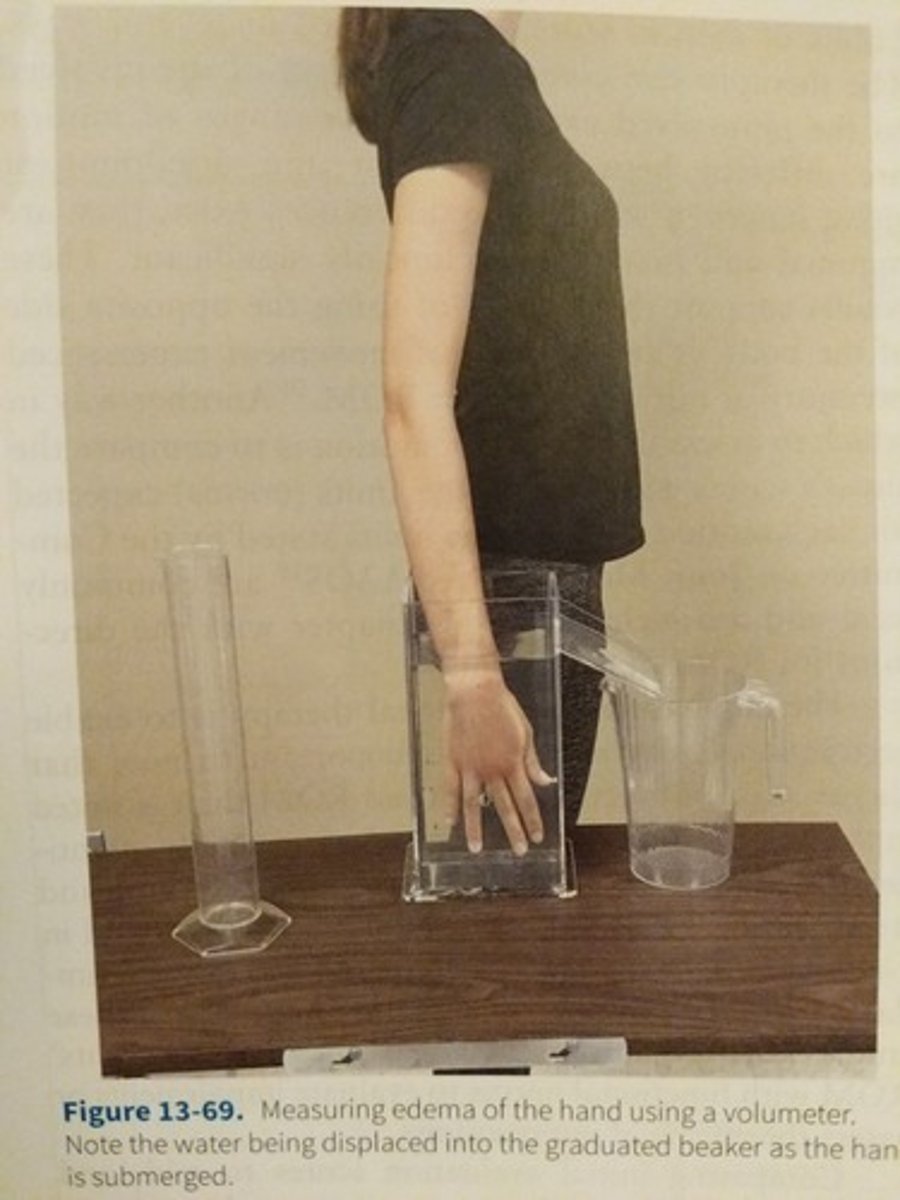
edema tx
○ Positioning (elevation)
○ AROM
○ Retrograde massage - activate lymph system
○ Compression
● Coban wrapping
● Compression gloves
● Compression pump
○ Contrast baths (cold/hot pump)
edema massage contraindications
1) damaged blood vessels - will cause hematoma
2) poor venous system - will have extra stuff to eliminate
3) metastasis
4) open wound or fragile skin
5) infection - avoid spreading
edema patient education
▪ Avoid long period of immobility
▪ Keep extremity wrapped but not constrictive
▪ Positioning
▪ Avoid injuring edematous area
▪ Heat increases edema
▪ No IV's to edematous limbs
▪ No blood pressure cuffs to edematous arms